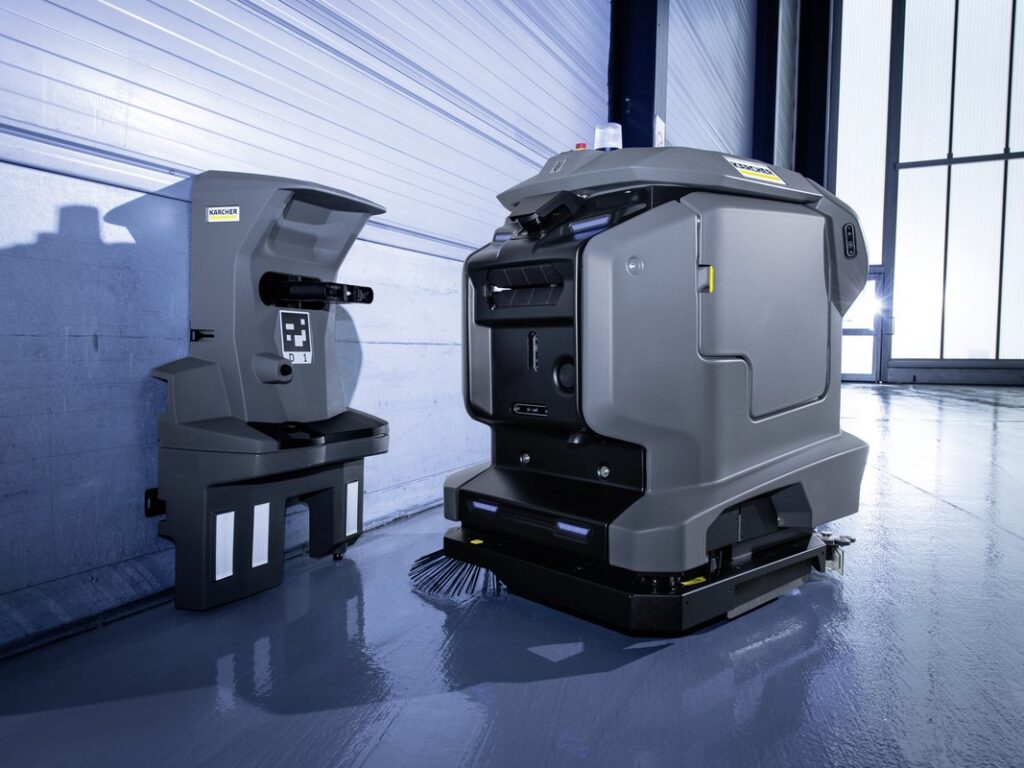Revolutionize Facility Cleaning with an Industrial Robot Vacuum
Manually cleaning the floors in a manufacturing plant, warehouse or any other large industrial facility is a time-consuming, but necessary evil. However, industrial robotic vacuum cleaners can get the job done quickly and effectively, freeing employees to perform more value-added tasks around the facility. This blog will explore the ways in which industrial robot vacuums are revolutionizing the cleaning process.

Industrial Robotic Vacuums Explained
Industrial cleaning robots and industrial robot vacuums are autonomous machines specially designed for large-scale cleanup of industrial facilities. Equipped with advanced sensors, navigation systems and cleaning tools, such as brushes and suction, industrial floor cleaning robots navigate through the facility sweeping up dirt, dust and debris.
The use of navigation and mapping technologies allows autonomous industrial cleaning robots to create a map of the workspace and determine the most efficient cleaning route, while sensors and cameras permit industrial robotic vacuums to safely traverse the area, avoid obstacles that may be in the cleaning path and adapt accordingly. Although they are autonomous – meaning they function with very little to no human intervention – most industrial cleaning robots also offer the option to manually program the cleaning pattern, which is managed via an interface.
Much like manual vacuum cleaners, robot vacuum cleaner industrial models are equipped with specialized cleaning tools, such as brushes, suction and filters, so they can pick up dirt as they move through the facility. Some industrial cleaning robots may also offer mopping and scrubbing features to provide more intense floor cleansing.
The Benefits of Cleaning with Industrial Robot Vacuums
Traditionally, manual floor cleaning has been the norm, but with the advent of autonomous industrial cleaning robots and advances in sensor and navigation technologies, industrial robotic vacuum cleaners present more than a viable option. They offer a highly efficient and effective alternative to manual housekeeping that also reduces costs and frees up employees so they may accomplish more complex tasks that add real value to the business.
Here’s a breakdown of the advantages of industrial robotic vacuums over manual floor cleaning:
- Time Efficient: Like most automation, industrial robot vacuums work faster, more efficiently and more precisely than human workers performing the same task. In addition, autonomous industrial cleaning robots can work continuously without breaks or becoming fatigued, making them more efficient when compared to manually cleaning facility floors.
- Effective Cleaning: While it’s human nature to hurry through tasks and cut corners, especially when performing mundane housekeeping tasks, industrial floor cleaning robots follow a programmed cleaning pattern, which ensures that every nook and cranny of the floor receives thorough treatment.
- Cost Effectiveness: In full transparency, there are costs associated with purchasing an industrial robotic vacuum cleaner. However, the operating costs associated with industrial cleaning robots are quite low because they require minimal maintenance and very little – if any – human intervention. So, when the cost of operating an industrial robotic vacuum is compared to paying a human employee to perform the same task, automated cleaning is often the more cost-effective solution. Some estimates suggest using an industrial floor cleaning robot can save up to 80% on labor costs. And, employees that were previously assigned to cleaning can be redirected to perform tasks that add more value to the core operation of the business, maximizing the cost effectiveness.
- Enhanced Safety: Industrial cleaning robots improve facility safety in several ways. First, they remove dirt, dust and debris from the floor, reducing slips, trips and falls. Use of industrial robot vacuums may also improve the air quality within a facility as dust will be removed from the area. In addition, autonomous industrial cleaning robots can be used to clean hazardous areas of the facility where manual cleaning presents risks to employees.
How to Select an Industrial Robot Vacuum
Selecting an industrial robotic vacuum cleaner isn’t as technical as purchasing and installing an industrial robot or cobot on a production line, but there are some considerations.
Below are a few key points to think about when purchasing an industrial robotic vacuum:
| Size of the facility | The size and layout of the facility will help determine the size and features required for the industrial cleaning robot. For example, a large area will likely require a cleaning robot with a longer battery life and a larger dustbin to successfully complete cleaning tasks. |
| Surface type | The material and structure of the floor to be cleaned will play a role in the effectiveness of the industrial cleaning robot, so be sure to ask if the chosen model can operate on the existing surface. Facilities with a lot of obstacles may also present an issue for even the most advanced navigation systems, so this may be a factor, as well. |
| Cleaning task | Each facility will have unique cleaning requirements – some will be heavy duty, some will be light – so be sure the industrial robotic vacuum is up to the task. Using a model designed for light office or commercial cleaning spaces will likely lead to disappointment when applied to a factory with a lot of dust and debris. Additionally, if floor surfaces need to be mopped or scrubbed, look for an industrial cleaning robot that offers these features. |
| Cleaning mechanisms | Industrial cleaning robots are available with different cleaning tools, such as brushes, suction, dry mops or wet scrubbers. Be sure that you select a model with the tool that is best suited for the surface and the task. Keep in mind that wet scrubbers will also require a cleaning agent that must be compatible with both the robot and the floor surface. |
Autonomous industrial cleaning robots offer a more efficient, more effective and lower cost method of cleaning the facility when compared to manual cleaning. Reach out to the experts at JHFOSTER, a Tavoron company, to determine which type of industrial robotic vacuum will be best at keeping your facility squeaky clean so employees can focus on operating production equipment instead of pushing a broom.
